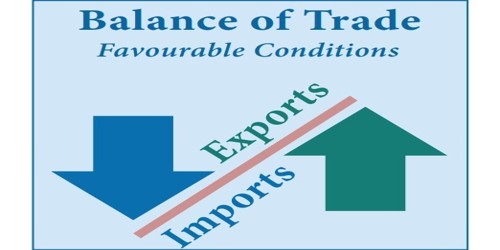
In the quest for wealth preservation, investors often search for strategies that can withstand market fluctuations and protect their assets over the long term. One of the most effective methods to achieve this goal is diversification. By spreading investments across various asset classes, geographic regions, and sectors, individuals can mitigate risk and enhance the potential for returns.
Understanding Diversification
Diversification is an investment strategy that involves spreading capital among different financial instruments, industries, and other categories to reduce exposure to any single asset or risk. This approach helps to limit the impact of poor-performing investments on an overall portfolio. By diversifying, investors aim to achieve a more stable and reliable performance over time.
The Principle of Risk Reduction
The fundamental principle behind diversification is risk reduction. Different asset classes often react differently to market conditions. For example, during an economic downturn, equities may decline in value, while government bonds might hold their value or even appreciate. When investments are diversified, the overall volatility of the portfolio can be reduced, leading to more consistent returns.
Minimum Variance Portfolio
In financial terms, a minimum variance portfolio is one that aims to achieve the lowest possible risk for a given return level. By including a mix of asset classes that have low correlations with one another, investors can create a more stable investment foundation. This concept is illustrated in modern portfolio theory, which emphasizes the importance of diversification to optimize risk and return.
The Importance of Diversification in Wealth Preservation

Wealth preservation is about safeguarding capital so that it retains its value over time, especially against inflation, market downturns, and economic volatility. Here are several key reasons why diversification is crucial for wealth preservation:
1. Protection Against Market Volatility
Market fluctuations can be unpredictable, and a significant downturn can greatly impact portfolios that are heavily concentrated in one asset class. Diversification helps cushion against such volatility. For instance, if an investor holds a portfolio solely in stocks, a market crash can lead to devastating losses. However, if that portfolio is diversified to include bonds, real estate, and commodities, the adverse effects of a downturn in any single market can be mitigated.
2. Enhanced Return Potential
A diversified portfolio not only helps reduce risk but also provides the opportunity for enhanced returns. Different asset classes and sectors may perform well at different times. By having a diversified mix, investors increase the likelihood of capitalizing on these varying performance cycles, which can lead to overall portfolio growth.
3. Inflation Hedge
Inflation erodes purchasing power over time, making it essential to invest in assets that can outpace inflation. Certain asset classes, such as real estate and commodities, historically have shown resilience against inflation. By diversifying into these areas, investors can protect their wealth from the diminishing effects of inflation.
4. Long-Term Stability
Wealth preservation is often a long-term endeavor. Diversification fosters stability within a portfolio, which can be particularly valuable during economic downturns or geopolitical uncertainties. A well-diversified portfolio is less likely to experience drastic fluctuations, allowing investors to maintain focus on their long-term goals.
5. Reduced Impact of Poor Performance
No investment is immune to failure. By diversifying investments across a range of assets, the impact of a poorly performing investment can be minimized. This ensures that one bad investment does not significantly derail an investor's overall financial plan.
Implementing an Effective Diversification Strategy
Creating a diversified portfolio requires careful planning and consideration. Here are some practical steps to implement an effective diversification strategy:
1. Assess Your Risk Tolerance
Before diving into diversification, it's crucial to assess your risk tolerance. Understanding your comfort with risk will help guide your asset allocation decisions. A conservative investor may prioritize bonds and fixed-income securities, while an aggressive investor might lean towards equities and alternative investments.
2. Identify Suitable Asset Classes
Investors typically include a mix of the following asset classes in their portfolios:
Equities: Stocks represent ownership in companies and can provide growth potential. Consider diversifying across large-cap, mid-cap, and small-cap stocks, as well as international equities.
Bonds: Fixed-income securities, such as government and corporate bonds, offer stability and income. Diversify within this category by including various maturities and credit qualities.
Real Estate: Investing in real estate, either directly or through real estate investment trusts (REITs), adds an additional layer of diversification and can provide rental income along with appreciation.
Commodities: Physical goods like gold, silver, and agricultural products can serve as a hedge against inflation and provide diversification away from financial markets.
Alternative Investments: Consider including hedge funds, private equity, and other alternative assets. These investments may not correlate with traditional asset classes, providing additional diversification benefits.
3. Geographic Diversification
Investing in different geographic regions can also enhance diversification. Economic conditions may vary significantly across countries and regions. Including international investments can reduce reliance on domestic economic performance and provide exposure to growth opportunities in emerging markets.
4. Sector Diversification
Different sectors of the economy may perform differently based on market conditions. For example, technology stocks may thrive during economic expansion, while utilities may perform better during downturns. By investing across various sectors, you can reduce the risk associated with sector-specific downturns.
5. Rebalance Regularly
Over time, the value of various investments can fluctuate, leading to an unintentional shift in your asset allocation. Regular rebalancing involves adjusting your portfolio back to the desired allocation strategy. This may entail selling some assets and buying others to maintain your diversification strategy.
6. Utilize Funds and ETFs
For investors looking for simplicity and instant diversification, consider using mutual funds or exchange-traded funds (ETFs). These products often offer exposure to a diverse collection of stocks or bonds in a single investment. This approach can save time and reduce the complexity of managing multiple investments.
7. Consult a Financial Advisor
If managing a diversified portfolio feels overwhelming, consider consulting a financial advisor. A qualified advisor can help assess your financial goals, risk tolerance, and investment options, creating a personalized diversification strategy tailored to your unique circumstances.
Challenges of Diversification

While diversification is a powerful tool for wealth preservation, it also comes with certain challenges. It's important to be aware of these potential pitfalls:
1. Over-Diversification
Too much diversification can dilute returns and complicate portfolio management. Over-diversification occurs when an investor spreads capital too thinly across too many investments, leading to inefficiencies. Aim for a balanced approach that achieves diversification without sacrificing focus.
2. Correlation Risk
Investments within the same class may still be correlated during economic downturns. For example, during a financial crisis, many equities may decline together despite being diversified across sectors. Understanding how different asset classes correlate can help mitigate this risk.
3. Emotional Decision-Making
Emotions can cloud judgment when managing a diversified portfolio. Market downturns may provoke panic selling, while periods of growth may lead to overconfidence. Maintaining a long-term perspective and sticking to your diversification strategy can help navigate these emotional challenges.
4. Costs of Diversification
Investing in a wide array of assets can increase transaction costs, management fees, and complexity. It is essential to weigh the benefits of diversification against these potential costs and ensure that they do not erode overall returns.
The Future of Diversification Strategies
As financial markets continue to evolve, the concept of diversification will also adapt. Here are some emerging trends and considerations for the future:
1. Impact of Technology
Technological advancements in investment platforms have made it easier for individual investors to access diverse asset classes. Robo-advisors and automated investment services are becoming increasingly popular for those seeking low-cost diversification solutions.
2. Growing Focus on ESG Investing
Environmental, social, and governance (ESG) factors are gaining prominence among investors. Many are interested in diversifying their portfolios with sustainable investments. Companies that prioritize ESG practices may present opportunities for growth while aligning with investors' values.
3. Crypto Assets
The rise of cryptocurrencies and digital assets has introduced a new dimension of diversification. Although highly volatile, including a small allocation of cryptocurrencies may enhance diversification, offering an alternative asset class that is not directly correlated with traditional markets.
4. Global Economic Factors
As the global economy becomes increasingly interconnected, geopolitical events, trade relations, and economic policies can significantly influence markets. Investors must stay informed about global developments to make informed diversification decisions.
Conclusion

Diversification is a fundamental principle of wealth preservation, providing investors with a robust strategy to manage risk, enhance returns, and achieve long-term financial goals. By spreading investments across various asset classes, sectors, and geographic regions, individuals can create a more stable financial portfolio. Implementing an effective diversification strategy requires careful planning, regular monitoring, and a focus on both short-term and long-term objectives.
While diversification is not a guarantee against losses, it significantly reduces the impact of market volatility and unforeseen economic changes. As you embark on your wealth preservation journey, remember that a diversified approach can be your best ally in protecting and growing your financial future.








